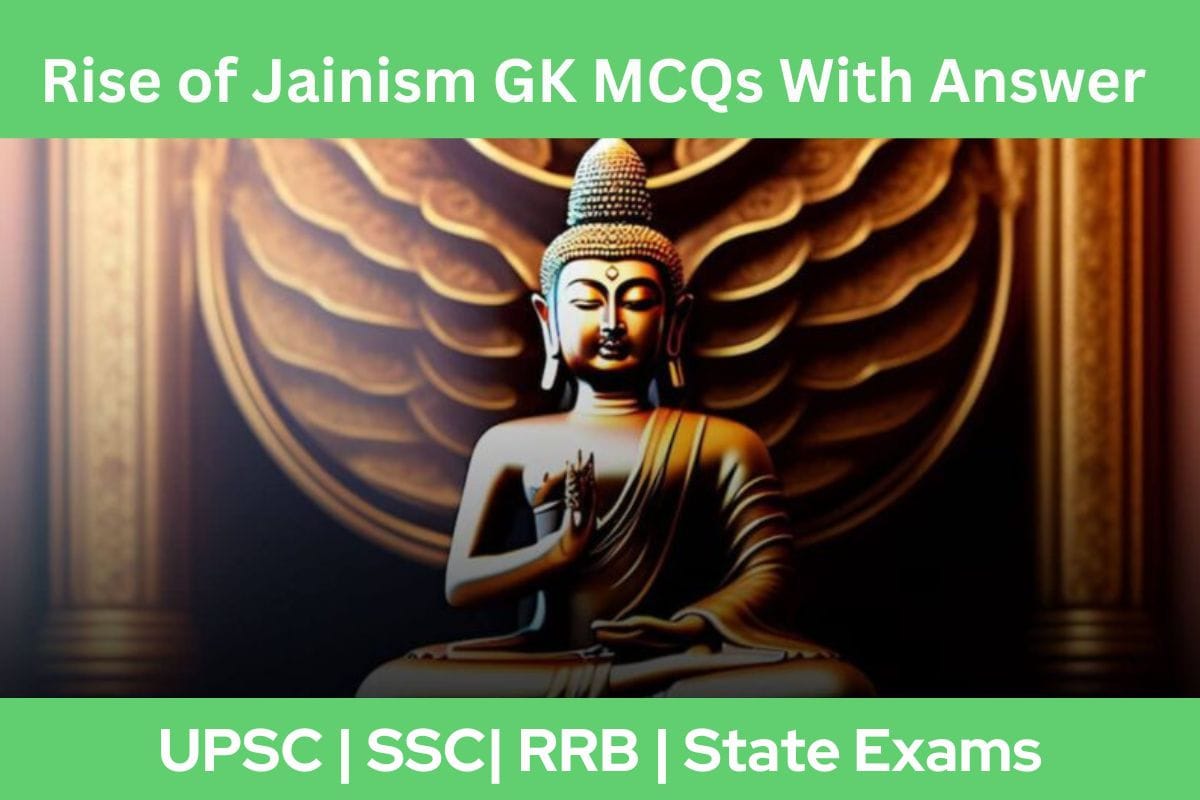
Jainism, one of the ancient religions of India, has a rich history and profound philosophical underpinnings. Originating in the 6th century BCE, it emerged as a distinct religious tradition in the context of the spiritual and social milieu of ancient India. The teachings of Jainism emphasize non-violence (ahimsa), truth (satya), non-stealing (asteya), celibacy (brahmacharya), and non-possessiveness (aparigraha).
Jainism has played a pivotal role in shaping the ethical, philosophical, and cultural landscape of the Indian subcontinent. For aspirants preparing for government job comparative exams, understanding the rise and development of Jainism is crucial to grasp the socio-cultural dynamics of ancient India.
1. In Pali texts, who among the following is referred to as Nigantha Nataputta?
- Gautam Buddha
- Mahavira
- Parshvanatha
- Rishabha
Show Answer
Correct Answer: Mahavira
In Pali texts, the term “Nigantha Nataputta” is used to refer to Mahavira, who is the 24th and last Tirthankara of Jainism. The term “Nigantha” is used to describe Jains, followers of Jainism, and a person who has attained kevalya, which is the ultimate liberation in Jainism, is called a “nirgrantha.”
2. Who was the first Tirthankara in Jainism?
- Rishabhdev
- Parsavanath
- Mahavira
- Munisuvrat
Show Answer
Correct Answer: Rishabhdev
Rishabhdev, also known as Adinath, is revered as the first Tirthankara in Jainism. He is believed to have been born in Ayodhya within the Ikshvaku dynasty. It’s important to note that while Jainism regards him as a spiritual figure, in Hinduism, Rishabhdev is considered an avatar or incarnation of Lord Vishnu.
3. On the bank of which river did Mahavira attain Kaivalaya?
- Niranjana
- Rijupalika
- Yamuna
- Jamuna
Show Answer
Correct Answer: Rijupalika
Mahavira, the 24th Tirthankara in Jainism, is said to have attained Kaivalaya (liberation) under a Sal tree on the banks of the river Rijupalika, near Jrimbhikgrama in present-day Bihar, India.
4. Who among the following was the 23rd Jain Tirthankara?
- Nemi Natha
- Mahavira
- Parshvanath
- Malinath
Show Answer
Correct Answer: Parshvanath
Parshvanath, the 23rd Jain Tirthankara, was born as a Kshatriya and was the son of Ashvasena, the King of Banaras (Varanasi). He played a significant role in Jainism, emphasizing principles of non-violence and spiritual awakening.
5. With which among the following places was the twenty-third Jain Tirthankara associated?
- Vaishali
- Kausambi
- Varanasi
- Sravasti
Show Answer
Correct Answer: Varanasi’
Tirthankara Parshvanath was indeed associated with Varanasi. He was the son of King Ashvasena and Queen Vama of Varanasi, and he is believed to have attained Nirvana on the Sammet Sikhar, a prominent Jain pilgrimage site
6. In which year was Vardhamana Mahavira born?
- 563 BC
- 540 BC
- 533 BC
- 560 BC
Show Answer
Correct Answer: 540 BC
Vardhamana Mahavira, the 24th and last Tirthankara in Jainism, is believed to have been born in 540 BC in Kundali Gram, which is located in present-day Bihar, India. Mahavira’s teachings and ascetic practices significantly influenced Jainism.
7. The grandson of Ashoka who accepted Jainism was?
- Samprati
- Kunala
- Dasharatha
- Salisuka
Show Answer
Correct Answer: Samprati
Emperor Samprati, the grandson of Emperor Ashoka, embraced Jainism and reigned from 224 to 274 BCE. His conversion to Jainism and patronage of the faith had a lasting impact on the spread of Jainism in ancient India.
8. What was the fifth tenet added by Tirthankara Mahavira to the four basic tenets of Jainism?
- Non-injury
- Non-lying
- Observe continence
- Non-stealing
Show Answer
Correct Answer: Observe continence
Tirthankara Mahavira added the principle of observing continence (brahmacharya) as the fifth fundamental tenet to the four basic tenets of Jainism. The other four tenets are non-injury, non-lying, non-stealing, and non-possession, forming the ethical foundation of Jain practice.
9. Tirthankara Parswanath’s idol is recognized by which symbol?
- Lion
- Bull
- Tortoise
- Serpent
Show Answer
Correct Answer: Serpent
The idol of Tirthankara Parswanath is recognized by the symbol of a serpent, which is one of the distinctive attributes associated with him in Jain iconography.
10. How many possessions is a Shwetambara ascetic allowed to have?
- 10
- 12
- 14
- 16
Show Answer
Correct Answer: 14
A Shwetambara ascetic is permitted to have fourteen possessions, which include items like a loin-cloth and a shoulder-cloth. In contrast, a Digambara ascetic renounces all possessions, including clothing, and is allowed only two possessions: Rajoharana (a piece of cloth for covering the body) and a Kamandalu (a gourd for carrying water), emphasizing a higher level of asceticism.


Leave a Reply